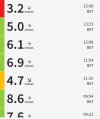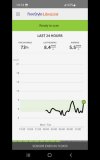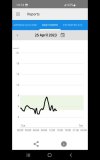curlygirl
Well-Known Member
- Relationship to Diabetes
- Type 1
I have had two lows on the libre recently that did not exist. I know from experience some sensors are more accurate etc but this was really reading way off. The one today said 3.2 and a straight down arrow but when I tested blood on the libre and on my other meter both said 6.4 and 6.7. This is the second time such a low has shown but blood fine in last week or so. Hoped it was dodgy sensor but have changed it since the last time. This has happened before but with both of these the strangest thing is that the false low appears in the logbook but not on the graph. Has anyone else had this or know why the graph does not show the false low.



